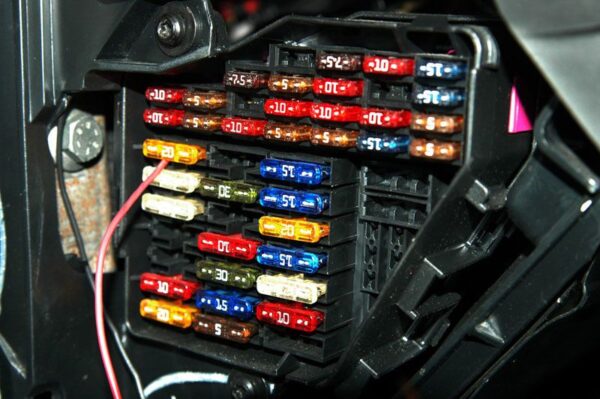If you ask most people why they take their car to a mechanic when they need regular maintenance done (if they do it at all,) there are one of two answers usually given:
1. It’s too time-consuming and/or a pain in the ass, or
2. I don’t know how to do it myself
It boils down to either taking too much time or ignorance. I mean that in the nicest possible way.
I’m here to tell you why they’re wrong, and explain that it doesn’t have to take two hours to change your oil and it’s not rocket science to change a blown lightbulb.
Take a look below and see how regular car maintenance is actually pretty easy. I’ve included some tools to speed up routine changes, and resources to bookmark to use when you need a quick reference to change out faulty equipment.
Change Your Oil Faster
Never touch the drain plug again
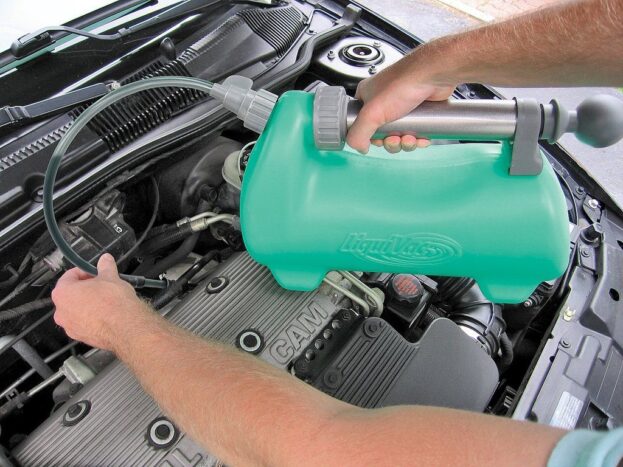
Don’t even want to bother draining your oil into a pan? Just grab one of these pumps, suck the oil out, and you’ve bypassed the messy bit altogether.
Keep in mind you’ll still need to change your oil filter (and fill it back up…don’t forget that part,) but if this thing does its job, there’s no need to get under the car and drain the oil the old-fashioned way like we did in our article and video, How to Change Your Oil.
The name brand product seems to be LiquiVac, but there are multiple products that do the same thing.
Get grippy oil filters
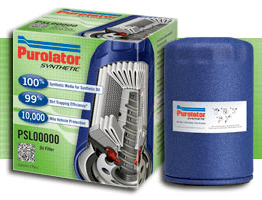
This might sound trivial, but it’s not, trust me. The difference in frustration level between a cheap, all-metal filter and one with some grip is huge.
It’s the difference between having to use a special tool to get the filter off and just using your hand.
If you get an oil filter with some textured grip like Purolator’s PureOne or their Synthetic filter, or Fram’s ExtraGuard filters, your life will be much easier. Most brands have an option for these and sometimes only takes an extra dollar or two to upgrade, which will also bag you a higher quality filter.
Oil Drain Valve
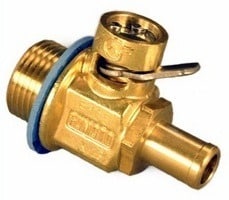
Here’s another one for the “why didn’t someone think of this sooner?” category.
Why unscrew and oil drain plug and get oil all over yourself every time when you could just flip the valve, let it drain, and flip it back when you’re done?
For $26 or so, it’s certainly not cheap, and I can’t seem to find it cheaper anywhere else (at least not of comparable quality.)
But for the time and effort it would save, I think I’ll be getting one for my cars.
It also has the added benefit of making sure all of the used oil is drained from the pan, unlike the quick pump method above.
Common Fixes
Checking Tire Pressure
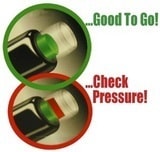 It’s safe to say that most people don’t check their tire pressure as often as they should, and it can be difficult to tell if the pressure is too low just by looking. Low tire pressure can put extra wear on the tires and reduce fuel economy, so it’s important to make sure they’re inflated properly.
It’s safe to say that most people don’t check their tire pressure as often as they should, and it can be difficult to tell if the pressure is too low just by looking. Low tire pressure can put extra wear on the tires and reduce fuel economy, so it’s important to make sure they’re inflated properly.
If you don’t have a newer car that has TPMS (Tire Pressure Monitoring System) built-in, these clever little tire pressure valve caps are the next best thing.
There are quite a few variations of these caps, but the concept is the same: green means good, red means low pressure. Couldn’t be simpler.
One thing to keep in mind: most tires are either set for 32, 36, or 40 psi, so make sure you buy the right cap for your tire’s pressure. Check the tire sidewall for the correct pressure before buying these. Some of them auto-calibrate so there’s no need to worry about that, but just be sure to check first.
Something stopped working
Many times, when something was working then suddenly isn’t working anymore, you’ll find the fuse has blown. Don’t freak out! It’s easy to fix.
Find out where your fuse box is. It’s typically in the driver or passenger footwell and/or under the hood. If you can’t find it, check the manual or quickly Google “where is the fuse box on a xxxxxxx?” and you’ll find your answer.
There’s usually the layout of the fuse box telling you which fuse controls what. Look for the thing that went out, or again, look online.
Check the fuse
If you can find the fuse easily just pull it out and look at it. Some fuse boxes have a small tool to pull fuses. If the filament is broken it’s blown. Just bring it to the auto parts store and get a replacement for a few cents, put it back in, and you’re good to go. Most fuseboxes have extra fuses for this reason, so you might not need to go to the store anyway, making this a very quick and easy fix.
If you’re not sure if it’s the right fuse or if it’s blown, pick up a cheap multimeter from Amazon if you don’t have one. Don’t know what it does? It doesn’t matter:
Turn the multimeter to the Ohms setting. Touch one of the leads to one end of the fuse and the other lead to the other side. If the needle gives a reading, the fuse is good. if it doesn’t, replace the fuse. That easy.
If you want some more info on how to find, check, and replace fuses, check out this article at Wikihow and this tutorial on how to change a vehicle’s fuses.
The Check Engine light is on
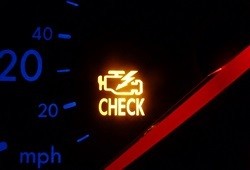 When someone’s Check Engine light comes on they do one of two things:
When someone’s Check Engine light comes on they do one of two things:
1. Ignore it completely, or
2. Freak out and drive it straight to a mechanic
Don’t do either.
The magic of OBD-II
Ever since 1996, all cars have been required to have the OBD-II diagnostics system. This makes it easy for mechanics and ourselves to get an idea about what’s wrong with the car quickly and easily.
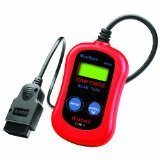 A check engine light could mean anything from a cylinder misfire (possibly serious) to a loose gas cap (not so serious,) or anything in between.
A check engine light could mean anything from a cylinder misfire (possibly serious) to a loose gas cap (not so serious,) or anything in between.
Every 1996 or newer car has an OBD-II port, which varies per vehicle but is almost always located in the driver’s side footwell. If you don’t know where yours is, just Google “ODB-II location in a xxxxx”.
There are a lot of options for consumer-level OBD-II scanners, but don’t let that overwhelm you. You can pick up a cheap OBD-II scanner from Amazon for less than $20 that just gives you a code (which you’ll then simply type into Google along with your car model to find out what the code means,) up to a wide range of other devices that integrate with your mobile or laptop and give real-time data and diagnostics within the system itself, and even ones that you keep connected to your car to log data about your driving.
Everybody should have at least a basic OBD-II scanner in their glovebox.
Quick-Release Fasteners
You don’t have to get out the tool box every time you have to replace something. Replace some fasteners, screws, and clamps with quick-release versions so it takes far less time to remove them when you need to.
Quick-Release Hose Clamps
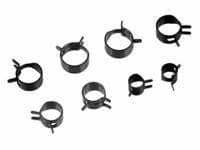 Regular screw-style hose clamps are a pain in the ass. Always having to find the right size, squeezing your hand into tight spaces and scratching your knuckles as you try to unscrew each one…
Regular screw-style hose clamps are a pain in the ass. Always having to find the right size, squeezing your hand into tight spaces and scratching your knuckles as you try to unscrew each one…
This tip alone can save you tons of time and band-aids.
These cheap little squeeze-type clamps are a life-saver and typically come in big packs to replace all of your hose clamps.
For bigger hoses like your radiator or air intake, you’ll want to skip these and use the larger and sturdier T-Bolt style clamps. They’re a bit more expensive, but also much stronger and well worth the cost, especially if you run turbos with high boost pressure.
Quick-Release Battery Terminal Bolts
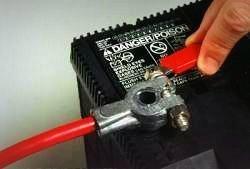 Most people probably don’t need to disconnect their battery very often, but those of us who work on our cars ourselves do.
Most people probably don’t need to disconnect their battery very often, but those of us who work on our cars ourselves do.
And why would you take your car to the mechanic to change your battery? It’s one of the simplest things you can do in a car. Come on people, it’s not that hard.
Why not make it that much easier and faster by spending the $10 and getting quick-release battery clamps that only require a flip of the wrist instead of getting out the screwdriver or socket wrench every time?
Seems like a no-brainer.
Resources
Amazon Auto Parts Finder – Amazon’s auto parts finder is a great tool for finding out info and part numbers and also finding cheap replacement parts. Be careful about parts that are too cheap.
Lamp Replacement Guide – Sylvania has a great online lamp replacement guide to let you know which size bulbs you need for your car. It’s not limited to headlights, but gives you all the bulb sizes for your car. The part number it gives you is universal, meaning you can use any brand bulb – not just Sylvania.
Car Parts Finder – Bosch has a good online system for finding what model parts you need for your car. It shows all sorts of parts from spark plugs to wiper blades, alternators to brake components.
Car Maintenance Bibles – CarBibles.com is a great resource if you want to find out more about anything related to your car. It gives in-depth reading on how different parts of your car work as well as tips on car maintenance and interesting articles.
Filter Replacement Guide – Purolator’s online part finder gives you a quick look at every filter your car needs: oil, air, cabin, fuel, and PCV.
Google – Probably the single best resource for car maintenance but it eludes so many. Want to know how to change the air filter on a 2005 Nissan Altima? Just type it in and hit enter. It’s that easy.
Anything Else?
What other car maintenance tips or hacks can you share with us to make everyone’s car ownership easier and lighter on the wallet?


